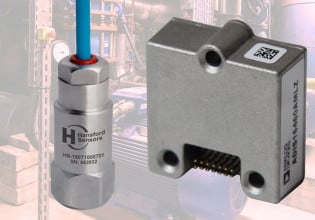New Edge Flow Sensor With Sensor Independence and Streamlined Bluetooth
This week, AW-Lake announced its latest flow sensor, the Edge Flow Sensor which integrates a flow rate sensor with a range of technologies including self-test and Bluetooth.
How does this sensor work with pre-existing hardware and how does it change the way engineers interact with industrial processes?
Sensor Readouts
IoT has become incredibly popular in industrial processes and because of this, sensors of a process can be streamed in real-time to a central server which can be accessed remotely anywhere around the world.
However, even in this situation, it can still be awkward to navigate an entire industrial system to find individual processes and then display reading from a specific sensor. This problem is amplified when there are many identical industrial processes who are only distinguishable by a unique ID.
This problem may soon change thanks to the reducing costs of IoT SoCs and their integration into individual sensors.
Introducing The Edge Flow Sensor
AW-Lake announced their latest sensor for industrial processes, the Edge Flow Sensor. This device is ideal for general industrial applications and provides a range of communication methods for connecting to control systems including the current loop (4mA – 20mA), pulse, and Modbus.

Edge Flow Sensor by AW-Lake. Image used courtesy of AW-Lake.
Powered by a standard industrial DC voltage range of 12V – 24V, the sensor has a 16-bit analog resolution, an output update time of 25ms, and an operating temperature range of -40°C to +85°C. The sensor displays excellent linearity, high-temperature stability, and long-term stability with a maximum error indication of 10% of maximum scaling.
The sensor output can be configured into a number of different types including push/pull and sinking/sourcing. The sensor can be connected to a PC via a USB 3.0 cable for use with basic monitoring and firmware updating.
Streamlined Setup with Bluetooth
However, what makes this sensor rather unique is that at its heart is a Bluetooth SoC that allows for the sensor to be remotely connected via Bluetooth.
An app available for smartphones allows engineers to connect wirelessly to the sensor to get a live reading of sensor data and also force the flow sensor to output a frequency to determine if the sensor is operating correctly.
The Bluetooth app also allows for adjusting the sensor's scale, output type, fine-tune, and correct linear/non-linear flow.

Dimensions of the Edge Flow Sensor. Image used courtesy of AW-Lake.
Such a design allows engineers to monitor the sensor when in close proximity without an HMI, overriding PLC operation, or removing the sensor.
The Edge Flow Sensor by AW-Lake shows that even basic sensors now have the opportunity to integrate microcontrollers and Bluetooth links, which can effectively make them independent of any outside controller.
It also allows for engineers to quickly monitor sensors of a process without needing physical access or affecting its operation hence reducing downtime.






